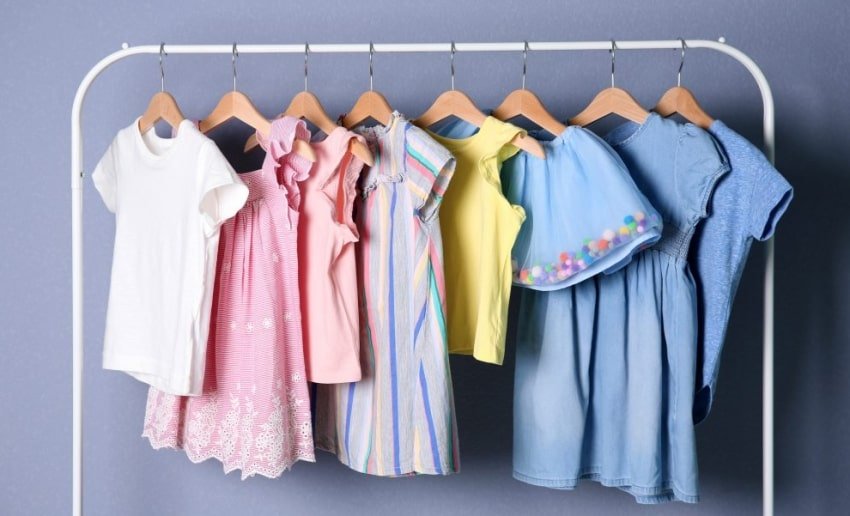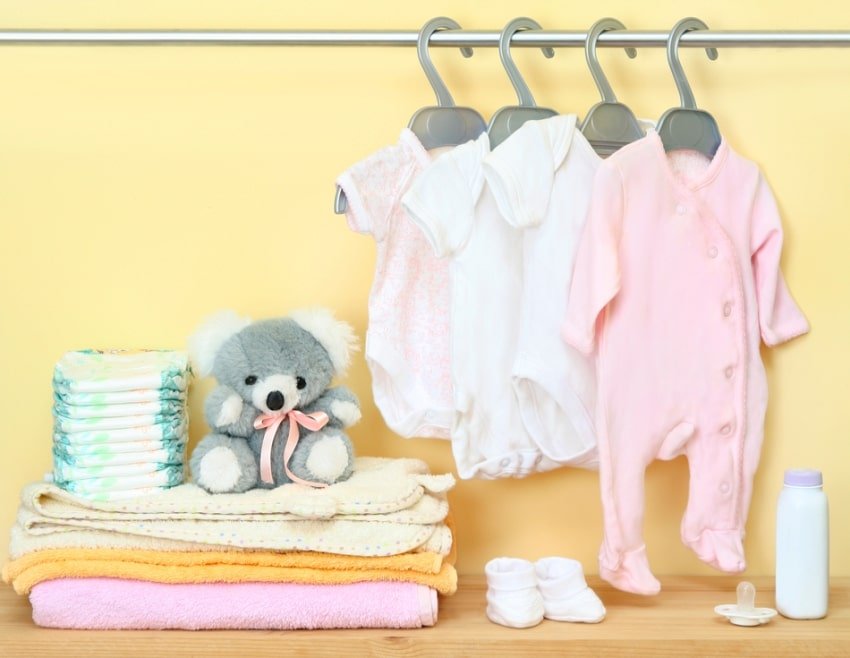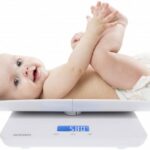We are spoiled for choice when it comes to clothes for our children. We cannot only purchase from our local stores but also buy clothes from all over the world, thanks to the fantastic online market we have.
As parents, we have the chance to shop in some fantastic European stores that offer a different take on what children should be wearing. Unfortunately, children also grow at a tremendous rate, meaning that the beautiful clothes that fitted them perfectly last week now don’t fit at all.
This is likely the case when they are babies. Their growth rate tends to slow down as they become toddlers if only a little bit.
Sizing of children’s clothes is a huge factor in purchasing items that are good for the money so that they will be able to get some good wear out of it.
In this article
So, What Size is After 5T?
The size that comes after 5T is size 6. Usually, 5t is the last in the toddler sizes. This is what the “t” stands for, and the number that proceeds it is the age of the average child that should fit that size.
View in gallery
Once your little one has outgrown the toddler sizes, most people move on to either a size five or a size six. A five is considered larger than a 5t. It depends on the size of your child; they may not get much wear out of it. So you move straight to the size six.
Size 5T average measurements
| Height | 41-44 inches | 104-112 cm |
| Weight | 39-45 lbs | 18-20 kg |
| Average Waist | 22-22.5 inches | 56-57 cm |
Size 6 average measurements
| Height | 45-48 inches | 114-122 cm |
| Weight | 43-50 lbs | 20-23 kg |
| Average Waist | 22-22.5 inches | 56-57 cm |
Once your little one leaves behind the ‘T’ clothing size and starts to wear big kids’ clothes, you would think that your worries would be over. However, there are still some differences that you may notice.
For instance, the cut of the clothing for older children may be slightly different depending on gender. The brand of clothing that you are purchasing will always play a big part in the actual size that you need to purchase, the same as it is for adults.
Children’s Clothing Sizes
Children’s clothing sizes have always been notoriously difficult to size correctly, simply because no two retail sizes are the same.
For example, a Gymboree 2T is listed as 33-36 inches in height and 30-32 pounds. Osh Kosh lists a 2T at 35-36 inches and 29-31 pounds. Many parents will tell you that the Gymboree brand runs a bit on the large side.
There is a big difference in how an item purchased from these two retailers would fit the same child. When buying, it is always wise to be aware of your child’s height, and weight as these are both usually stated, dependant on the brand that you are purchasing, of course.
These are the sizing categories that you will normally see across the children’s range:
- Baby – preemie, 0-24 months
- Toddler – 2T -6T
- Little Kid – 4-6X
- Tween – 7-16
Baby
Baby clothing is sized both in months and also height and weight. You do need to take note of the height and weight as the age range can vary hugely, especially in babies.
View in gallery
You also need to be aware that zero to three months in one retailer could be a hugely different in size in another retailer. Take note of their height and weight recommendations to get a better idea of size.
Toddler
The ‘T’ in this clothing size stands for toddler. The number that proceeds should correspond with their approximate age. But there is some overlap between baby and toddler sizes, and as all parents know, no child is ‘average’ in any area of their life!
Kids
The sizing for older children is based on their age, but they do always provide height and weight reference for you to work off.
As you get into the tween sizing, you may notice a difference between boys and girls sizing. This is to account for changes in their body that happen around this age.
European Clothing Sizes
As parents, we’d love our children to look different and not just wear the same clothes as every other child. So, if you like to shop online, which usually means more options available, including many European retailers.
Now sizing in Europe has an entirely different set of rules and sizes. British sizing is not too different from American sizing, which uses the child’s age as your guideline. But European sizing is based on height as your guideline.
Now, I could not tell you off the top of my head the heights of my sons, and this could pose a slight issue if ordering from a European based clothing company. Do not worry as most retailers will provide a conversion chart on their website.
Just remember that these are only approximate and still leave a margin of error. If you have any doubt or if you were buying for a friend, for example, I would always buy bigger as at least then they can grow into it rather than them receive it and it already is too small!
An excellent example of a European conversion chart would be the Swedish company, Hanna Andersson. They use a centimeter sizing based on the height of the child. Their sizing table looks like this:
| 50 cm | 18-22 inches | 0-3 months |
| 60 cm | 22-26 inches | 3-6 months |
| 70 cm | 26-30 inches | 6-12 months |
| 75 cm | 28-30 inches | 12-18 months |
| 80 cm | 30-32 inches | 18-24 months |
| 85 cm | 32-34 inches | 2T |
| 90 cm | 34-38 inches | 3T |
Just remember that children are as individual as we are and no more so than when it comes to clothing.
Are 5T And Five The Same Size?
It depends on the brand. Some brands will state that they are size five, others say 5T. It is rare, but sometimes they will state that they are both.
View in gallery
This confusion may be because the average-sized child based on their height and weight would fit into a size five or a size 5T. But if your child is on the smaller side, then they would be better off with clothes that fit their body size while bigger children would be better off from a fitting that is longer and looser.
One of the biggest differences between these sizes that tells them apart is that 5T might be suitable for smaller children. This is why most moms will tell you that size 5t fits their children before a size five.
Another difference is that the size 5T has the extra space for a diaper, whereas the size five does not. This is the case with many clothes in the T sizing.
When Can My Baby Start Wearing 5T?
The simple answer to this is when they outgrow the previous size of 4T or four. The average size 4T measurements will indicate when your child may be reaching the upper limits.
Ultimately, you will move them up when you notice that their clothing is no longer fitting correctly in relation to their height or weight.
Here are average size 4T measurements:
| Height | 38-41 inches | 96-104 cm |
| Weight | 35-39 inches | 16-18 kg |
| Average Waist | 21.5-22 inches | 55-56 cm |
How To Take My Toddler’s Measurements
This will either be an easy task or a complete nightmare. It will depend on how cooperative your little one is, but here is the best way to get their measurements.
Height
It is best to measure them up against a door frame or a wall. Make sure that they are standing upright with their heels against the wall/door frame.
Mark just at the top of their head and then get a tape measure and measure from the floor to the mark. This is easier than trying to wrestle a toddler and a tape measure all at once.
- ? The Evelto high-quality canvas growth chart comes in a nice package, with an adhesive hook and black marker, so that is easy to install and fun to use.
- ?️ Chart dimensions are 74in x 7.87in (190cm x 20cm). The Ruler is precise and can measure up to 180cm, and 6ft or 72in (fit even for an average adult). The Chart is made of high-quality canvas cloth fabric, durable, waterproof, easy to wipe. It is also removable, easy to roll up, and store. The white background is easy to write on with a permanent marker. The decorative terminations are made of one piece, high-quality polished pine wood.
Prices pulled from the Amazon Product Advertising API on:
Product prices and availability are accurate as of the date/time indicated and are subject to change. Any price and availability information displayed on [relevant Amazon Site(s), as applicable] at the time of purchase will apply to the purchase of this product.
Chest
You are going to measure around the widest part of their chest under their arms. It would help if you made sure that their arms are relaxed by their side.
Waist
Make sure you measure close to their belly button. This will give you their waist measurement.
Last Words
Clothes shopping for children can be such a fantastic experience and also the thing that nightmares are made from. Sizing is one of the deciding factors in what clothing your children can and can not wear.
My advice would be to remember that because a size 5T fits in one retailer, there is no guarantee that it will fit in another retailer.
Children are individuals, and their sizes aren’t always the same. I have had a child above the average and was wearing bigger sized clothes than her sister, who was 18 months older than her. I also have a little boy who is nearly two and is so tiny he is still wearing 6-9-month-old clothes.
As parents, we need to purchase clothes that are beautiful but offer good value for money as well. This means that the sizing needs to be true to size for us to ensure that our children get excellent wear from their clothes!






